Job stress, moral injury, burnout, and the great resignation—these are very real concerns for the field of hospital medicine, exacerbated by but not limited to the unprecedented challenges of the COVID-19 pandemic over the past three years.
But despite all the turmoil, some hospitalists say they love their jobs and still enjoy practicing acute medicine in the hospitals where they work. How do they go to work every day with smiles on their faces? How are they able to enter the hospital’s sliding glass front doors filled with hope, anticipation, and curiosity?
We asked several hospitalists to share their stories and their secrets for job satisfaction and job-stress management. What mindsets, perspectives, or techniques are helpful to them? We learned how differently individual hospitalists can approach these questions and how they have found their own highly personal paths to job satisfaction. But what they have in common is a commitment to rediscovering and renewing the passion and joy that first inspired them to become doctors.
An environment for engagement
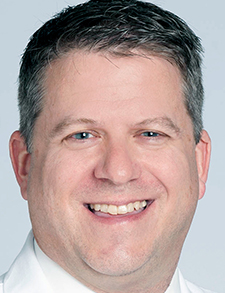
Dr. Wardrop
For Richard M. Wardrop III, MD, PhD, FAAP, FACP, FHM, a hospitalist at the Cleveland Clinic in Cleveland, Ohio, program director of its internal medicine residency, and vice chair of its academic department of medicine, his commitment to medicine as a profession, almost as a higher calling, has been a foundation from which he draws strength and optimism. “Something as simple as walking through the hospital in a white coat and seeing patients look at you with hope in their eyes. People want to be cared for and they look to us as someone who will care for them,” he said.
“Ever since I left medical school, I have considered myself a physician first. That centrality of my identity has never wavered. I feel the part on a daily basis and am very comfortable in that role,” Dr. Wardrop said. “Part of my identity is also about engagement with interprofessional relationships, which I see as an antidote to burnout. I actually feel pretty happy coming up to the hospital wards. It’s a target-rich environment for engaging with people.”
Yet he’s not immune to the “Sunday Scaries,” starting on the day before, dreading going back to work Monday morning. “That’s a thing,” he said. “But for me, by 10 a.m., I’m wondering what I was so worried about. This is what I’m supposed to be doing, what I’m trained to do and like to do.”
Dr. Wardrop has also tried to bring a more frankly philosophical frame of mind to the existential career questions that are being raised by many of his hospitalist peers. He is also coming to terms with having reached midlife.
“As a parent of three kids in their 20s and late teens, trying to be a better father, a better husband, but also a better person—and not fear aging—I find some hope in philosophy and my own study of it.” He’s deliberate about scheduling exercise, bicycle rides, and spiritual meditation.
“One of my satisfiers of a good day is to be able to read for a half-hour at night before I go to bed.” That reading includes the Stoic philosophers of ancient Greece, like Epictetus who maintained that the foundation of philosophy is self-knowledge and the meditations of Roman emperor Marcus Aurelius.
“Today I had several things happen to me as a doctor and as a leader that were pretty fantastic. Of course, interspersed with that was total chaos—all kinds of things happening in the hospital. But I felt I was effective as a physician, educator, coach, and leader,” he said.
“For a patient I saw in clinic yesterday, I was concerned about his case, waiting for the results of a test, which came back this morning. I was glad to find that everything turned out for the better. I was also surprised by a graduating resident who came to share the good news about landing a job. It was the ultimate affirmation that we had done all the right things (in his training). And I had an important meeting with the chair of our cancer institute. Tonight, I’ll go home and watch TV with my wife and eat pizza.”
An entrepreneurial approach
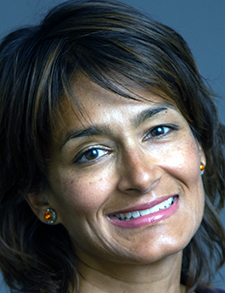
Dr. Mandal
Atashi Mandal, MD, practices clinical hospitalist shifts at four different hospitals, three in the Los Angeles/Orange County metro area and a fourth in the isolated mountain hamlet of Bishop, Calif., population 3,820, a four-hour drive from the LA basin. That mix includes both adult and pediatric hospital medicine, reflecting her dual specialty training, and is largely conducted nocturnally.
“I love the career I have carved for myself over the past two decades,” Dr. Mandal said. “I’m grateful for the opportunities I have been afforded, but it also took some wherewithal and sense of entrepreneurship on my part to craft my career as I have it currently.” She started out as a traditional full-time, one-hospital hospitalist. But after about three years she realized she wasn’t enjoying the job, wasn’t getting much opportunity to practice pediatrics, and needed more variety than one job could offer.
As a lifelong night owl, she was also finding it increasingly difficult to get up at 5:30 a.m., while frequent migraines caused her primary physician to suggest that she needed to make some changes in her life. “That was the moment I decided I had to do something different, even if I didn’t know quite what that would be.”
Dr. Mandal’s willingness to work night shifts made several hospitals eager to employ her on a part-time, contractual basis. “I realized I could work independently, making my own schedule, while working to demonstrate my reliability, collegiality, and excellent patient care.” Then, in 2018, she was recruited to work shifts at the 25-bed Northern Inyo Hospital in Bishop, Calif.
“I have benefitted so much from my exposure to different settings in health care delivery, geography, and patient populations, as well as my interactions with so many amazing colleagues,” she said. For example, after years of working in urban settings, she finds it meaningful to contribute her medical skills to the rural community of Bishop.
Dr. Mandal places a high emphasis on taking care of patients, and her jobs are 100% clinical. “I consider myself part of the team. I’m there to assist, enhance, and help the team excel. I’m able to participate in something greater than just doing a shift.”
But she is also committed to community service and advocacy. She is active in SHM and other organized medical groups. She serves on a committee convened by a local county sheriff to investigate deaths in vulnerable unhoused populations.
Dr. Mandal says she’s managed to avoid the rock-bottom burnout some hospitalists have experienced. “But I have shared the collective exhaustion of doctors over the last three years. I’ve always kept a finger on my pulse and what gives me joy,” she said. That includes maintaining deep connections with friends and colleagues. “These kinds of connections are comforting, especially when life gives us a plate full of unknowns.”
She loves being outside, running, and hiking. Also bringing her joy are reading, playing the piano, and walking on a beach at sunset. “Leaning on a rock warmed by the sun just seems to bring everything back home for me. I am fortunate that those simple pleasures are really all I need to fill my cup.”
Where might Dr. Mandal go from here? “I’ve been giving a lot of thought to the glide path to the rest of my life,” she said. “I’ve been successful doing what I want to do. But will it feel the same in 10 years, when shift work starts to feel too rigorous? Will I still want to be working this many night shifts?”
One possible direction might be to give back to medicine through teaching, although that plan has yet to take firm shape. “With the pandemic ushering in telemedicine, that creates some exciting territory to find other options,” she said. “We do ourselves a favor just by thinking ahead.”
A service mentality
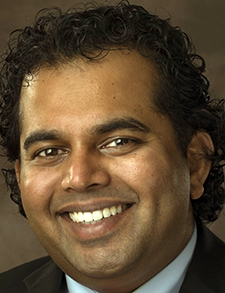
Dr. Skandhan
“I love my job,” said Amith Skandhan, MD, FACP, SFHM, a hospitalist for Southeast Health in Dothan, Ala., associate program director of its internal medicine residency program, and director of physician integration for Southeast Health Statera Network. “Being a hospitalist demands a balance of three traits: clinical acumen, quality of a collaborator, and the ability to coordinate the patient’s care,” he said.
“I find a lot of joy in hospital medicine. But often, you can be overwhelmed by the number of acutely sick patients with complex social and financial needs. I sometimes wonder if we set realistic expectations and provide the tools and skills hospitalists need.”
A sense of burnout and physical and emotional exhaustion can happen to any hospitalist, Dr. Skandhan said. “To overcome this, we must be self-aware enough to know a problem exists; practice self-care to recharge to develop the strength to tackle the problem; and take ownership to self-manage the problem head-on.”
He prioritizes self-awareness and reflection. “If you have a day where something made you happy, stop and reflect on that. What made it a good day or a bad day? What brought you joy?” he said. “I enjoy discussions with families, especially when they face difficult life decisions for themselves or their loved ones.” For the hospitalist, it’s particularly challenging to quickly develop trust, understand where the patient is currently, provide information, and guide them toward the appropriate treatment plan.
Dr. Skandhan noted a discussion he once had with the chaplain at his hospital. He was surprised to learn that chaplains are trained to recognize when they may be developing burnout and emotional or moral injury. “It is surprising that the profession of medicine, which deals with the sick and suffering, does not provide its healers with these tools,” he said.
“To overcome burnout and become resilient, it is crucial to prioritize things that recharge you and promote self-care. Those are different for different individuals. For me, it’s traveling, meeting friends and family, and socializing. Without that, it’s difficult for me to recharge,” Dr. Skandhan said.
“You can’t change the circumstances or the environment you are in. You can only change how you respond to the situation. I remember, during the surges of COVID-19, it was getting tough not to lose empathy and [to] take care of our patients. I would catch myself and try to find simple reasons for gratitude. A big one I had was the gratitude for being able to be of service during this difficult time,” he said.
“I have often felt that to find meaning in hospital medicine, we have to think about more than treating one patient at a time. Hospitalists deal with every aspect of the acute-care setting. We can see common hurdles. Often, using our qualities of collaboration and coordination, we can work to fix them.”
A service mentality is essential and can be expanded to the regional and national levels by joining SHM. Hospitalists can volunteer with SHM local chapters, special interest groups, and committees. “I co-founded and led the Wiregrass Chapter of SHM. Through this chapter, we have improved the quality of inpatient care in our community. Additionally, I have served on multiple committees and the editorial board of The Hospitalist.”
Promoting wellness
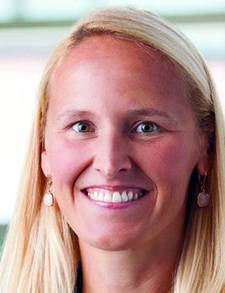
Dr. Richards
Sarah Richards, MD, FACP, associate professor of medicine at the University of Nebraska, Omaha, and senior medical director for clinician experience for Nebraska Medicine, is also active nationally in promoting wellness and preventing burnout for hospitalists. She recommends accessing the resources SHM has developed in this area, including the Well-being Advocates Toolkit and Check-in Guide for Self & Peers at SHM’s Well-being webpage and The Seven Drivers of Burnout in Hospital Medicine.
“I think about these things all the time,” Dr. Richards said. “Because I’m talking to experts across the country about normalizing and validating job stress concerns, I know we’re not alone. I also work closely with our health system’s behavioral-health practitioners,” she said.
“I happen to be part of a hospitalist group at the University of Nebraska where our leaders really do value the importance of things like flexible scheduling. 80% of our hospitalist shifts are according to personal preference.” The leaders practice humility, and colleagues treat each other with respect. That foundation for the group’s culture has helped her to continue finding joy in her work, even as growing administrative responsibilities have reduced her shifts as a hospitalist.
“For me personally, it’s about focusing on the positive elements of the day, even if there were just one or two. Examples such as a meaningful interaction with a patient or family member, a ‘thank you,’ a success story, something in their care that went well, or a breakthrough moment. Ultimately, we need to focus on those things as a team—and on positive interactions with our colleagues,” she said. “When I get to work with a team that is excited to learn, to provide care, that is happy to be at work, that’s a good day.”
One of the positive things the pandemic brought is that doctors are a little more open, more vulnerable, and willing to talk about how hard things can be achieved. “It’s no longer rare for us just to talk about the things that were tough at work, to just be open to sharing that with our colleagues.”
Dr. Richards said people have the impression that she is positive and happy all the time. “So, I am trying to be more honest, telling my real story, sharing my own stresses, the challenges, and joys of being a mom with three daughters.”
Getting there on time
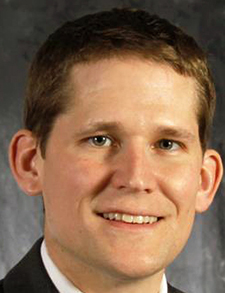
Dr. Miller
Nathan Miller, MD, a hospitalist at Avera McKennan Hospital and University Health Center in Sioux Falls, S.D., and clinical vice president of the hospitalist service line at AveraHealth, chose hospital medicine because he loved acute medicine, and he loved the people he worked with. “I think you need both,” he explained. “I am fortunate to have landed in the medical field that I am most passionate about.”
Dr. Miller said he believes in hospital medicine. “I think we have the ability to help patients navigate through their hospital stay—which can be scary and complex, becoming more so all the time. But sometimes at the end of the day, the most important thing I’ve done is just to explain the care plan to the patient and family. Communication might be what you call a softer skill, but it’s often the most important thing in medicine.”
When he walks into the hospital in the morning, Dr. Miller thinks, “The only thing I truly have control over is getting here on time. I come in with a rough idea of what my day is going to look like, but I can’t guarantee somebody isn’t going to get clinically a lot worse, and I have to be okay with that. That’s what allows me to do what I really enjoy doing,” he said. “I’m also a realist. Every single day something is going to frustrate you.”
On a typical shift, Dr. Miller sees 13 to 15 patients, most often concentrated geographically, although he also does shifts rounding in the ICU or attending on a teaching service. “I really like the higher acuity of hospital medicine. I can geek out on diagnosing the rare cases, and also the complex interplay of working with the health care team and helping the patient have the best outcome possible for them.”
He hopes to do hospital medicine for the rest of his career, until retirement. “I now do 10 shifts a month along with my administrative responsibilities. For our hospitalist group, we talk about how to create a job that can make hospital medicine a sustainable lifetime career.”
What has been Dr. Miller’s formula for averting job stress and burnout? “What I’ve learned over 12 years as a hospitalist is not to commit to doing too much on top of clinical care responsibilities. There is a finite number of roles I can do and do well. Past that point, saying no is my guardrail against burnout.” It’s particularly important not to take too many leadership roles, he said.
“At one time, I had the hospitalist service line and a few other administrative responsibilities on my plate. I had to say they were important, but I can’t do everything. I was also head of the teaching service. But we have phenomenal faculty who took over that role and took it to new places,” he said.
Did the COVID-19 pandemic make it harder to set limits? “Absolutely. We may not have had the total number of COVID-19 cases as a place like New York City, but we’re a 450-bed hospital, with 165 to 200 patients on the hospitalist service. There was a time when 120 of 170 patients had COVID-19,” Dr. Miller said.
“We were fortunate here at Avera McKennan to have administrative leadership we could work very well with, which is crucial. But it was definitely hard, and for me, it was harder when we had a vaccine, and we were seeing patients who could have benefitted from that. It was a hard time overall for medicine, with terrible human suffering and tragedy. We’re still trying to work our way out of all that.”
Larry Beresford is an Oakland, Calif.-based freelance medical journalist, specialist in hospice and palliative care and long-time contributor to The Hospitalist.